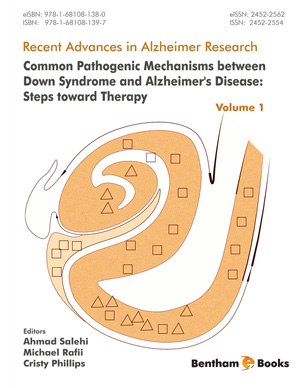Abstract
Neuroimaging provides noninvasive in vivo information regarding brain structure and function, which is associated with few if any adverse events, and can serve as a diagnostic and research tool. In Alzheimer’s disease (AD), there is a rich literature of studies using various imaging techniques to understand early changes with disease, disease progression and prodromal changes signaling transition to dementia. In this chapter, we describe different imaging approaches used in Down syndrome (DS) including structural and functional magnetic resonance imaging (MRI), MR spectroscopy (MRS), fluid attenuated inversion recovery (FLAIR), susceptibility weighted imaging (SWI), diffusion tensor imaging (DTI), positron emission tomography (PET), both glucose metabolism and imaging with ligands that can bind to AD plaques and neurofibrillary tangles. In DS, there are several structural MR studies showing neurobiological features of the DS brain that are unique to this cohort. When comparing AD in DS, there are significant overlaps in neuroimaging outcomes that distinguish those with and without dementia. However, there are significant gaps in our knowledge of the aging and AD processes in DS. Neuroimaging approaches will help identify a therapeutic window for intervention (e.g., best age for prevention of disease) as well as provide us with new outcome measures that can be used in clinical trials for DS and AD in the general population.
Keywords: Amyloid imaging, arterial spin labeling, cerebrovascular, diffusion tensor imaging, positron emission tomography, structural imaging, susceptibility weighted imaging, spectroscopy, trisomy 21, white matter hyperintensities.






















